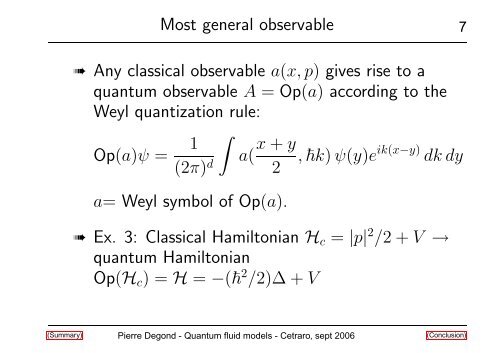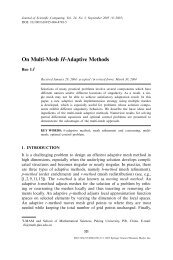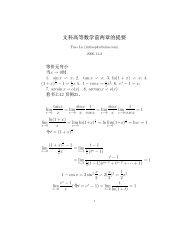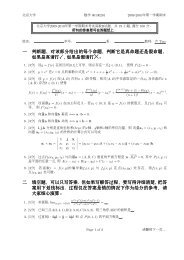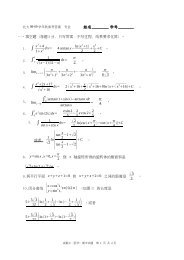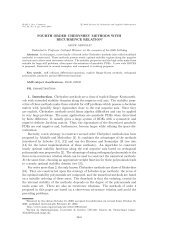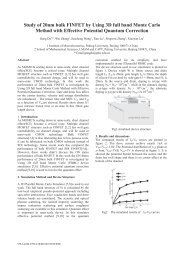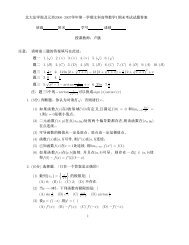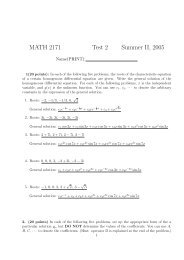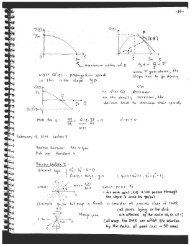Chapter 1 Quantum kinetic equations: an introduction
Chapter 1 Quantum kinetic equations: an introduction
Chapter 1 Quantum kinetic equations: an introduction
Create successful ePaper yourself
Turn your PDF publications into a flip-book with our unique Google optimized e-Paper software.
Most general observable<br />
➠ Any classical observable a(x, p) gives rise to a<br />
qu<strong>an</strong>tum observable A = Op(a) according to the<br />
Weyl qu<strong>an</strong>tization rule:<br />
Op(a)ψ = 1<br />
(2π) d<br />
<br />
a= Weyl symbol of Op(a).<br />
x + y<br />
a(<br />
2 , k)ψ(y)eik(x−y) dk dy<br />
➠ Ex. 3: Classical Hamiltoni<strong>an</strong> Hc = |p| 2 /2 + V →<br />
qu<strong>an</strong>tum Hamiltoni<strong>an</strong><br />
Op(Hc) = H = −( 2 /2)∆ + V<br />
(Summary) Pierre Degond - <strong>Qu<strong>an</strong>tum</strong> fluid models - Cetraro, sept 2006<br />
(Conclusion)<br />
7


